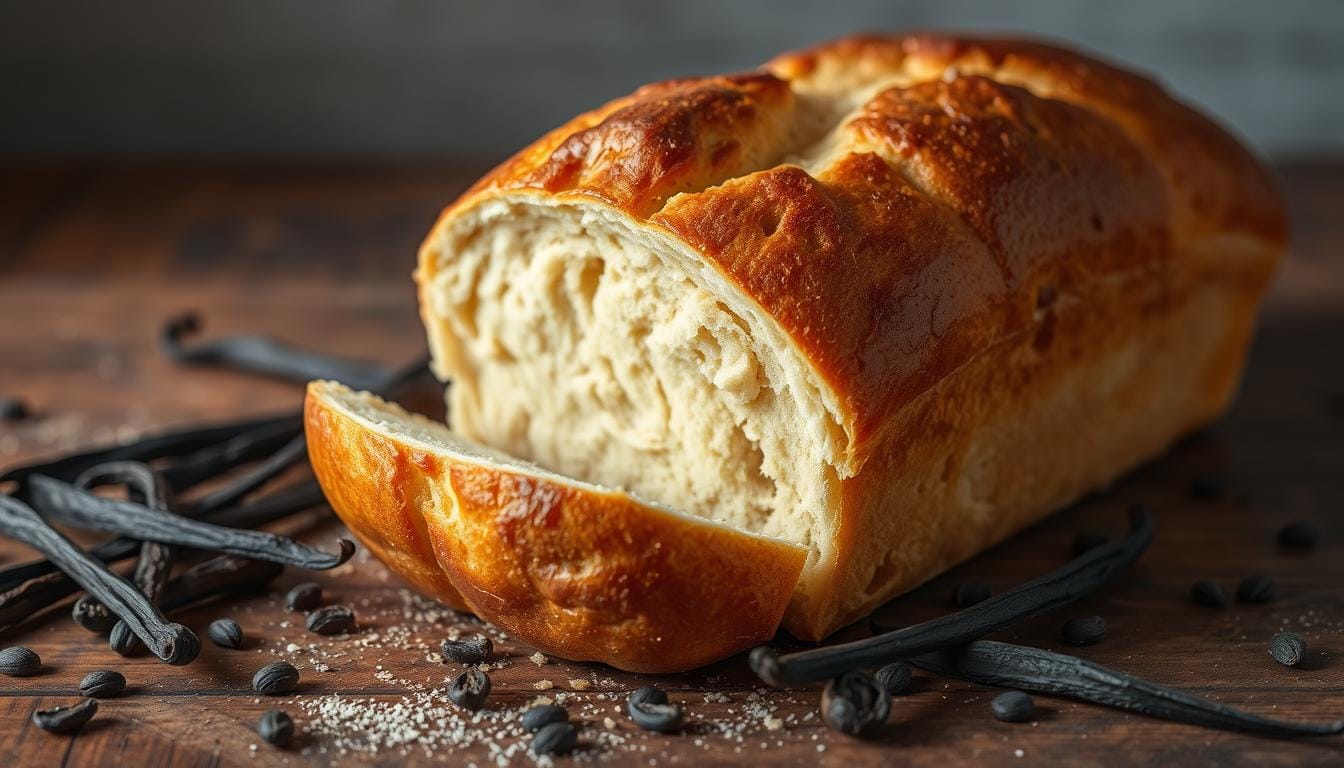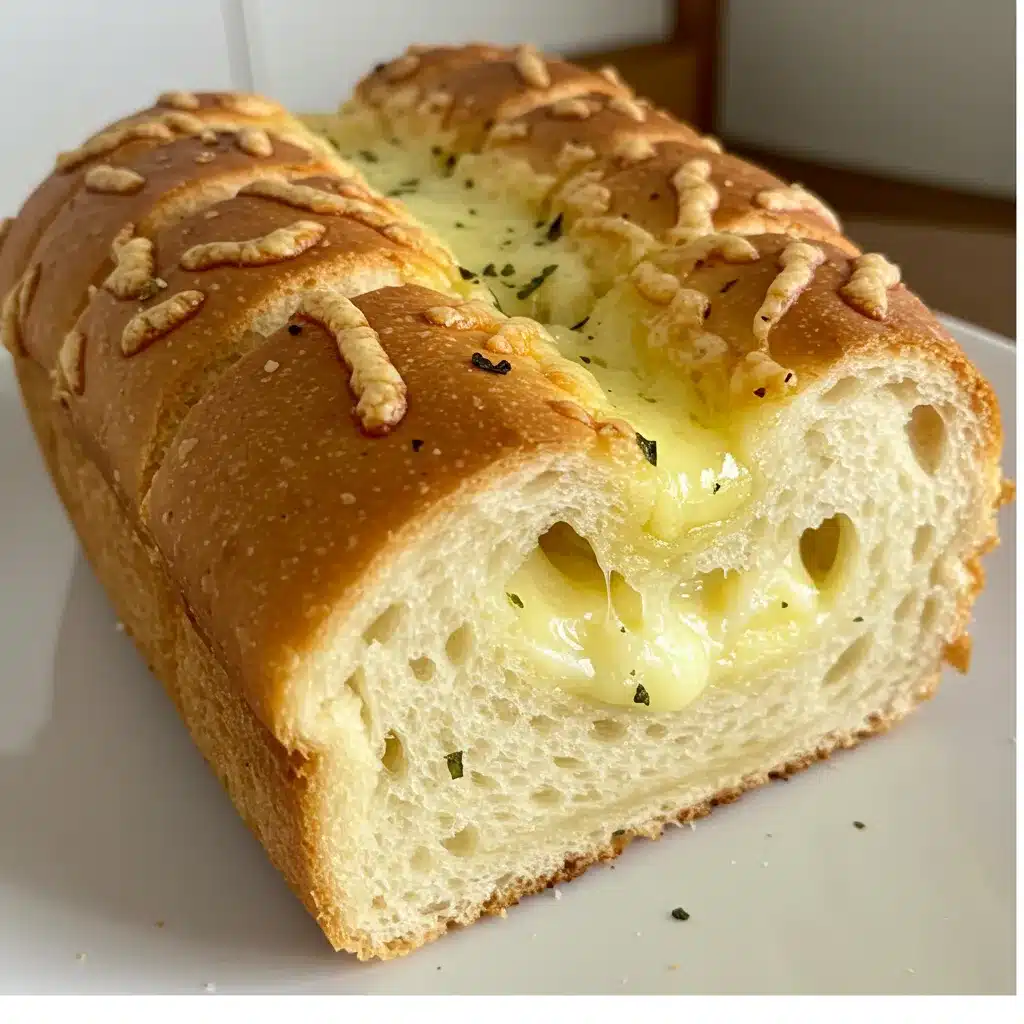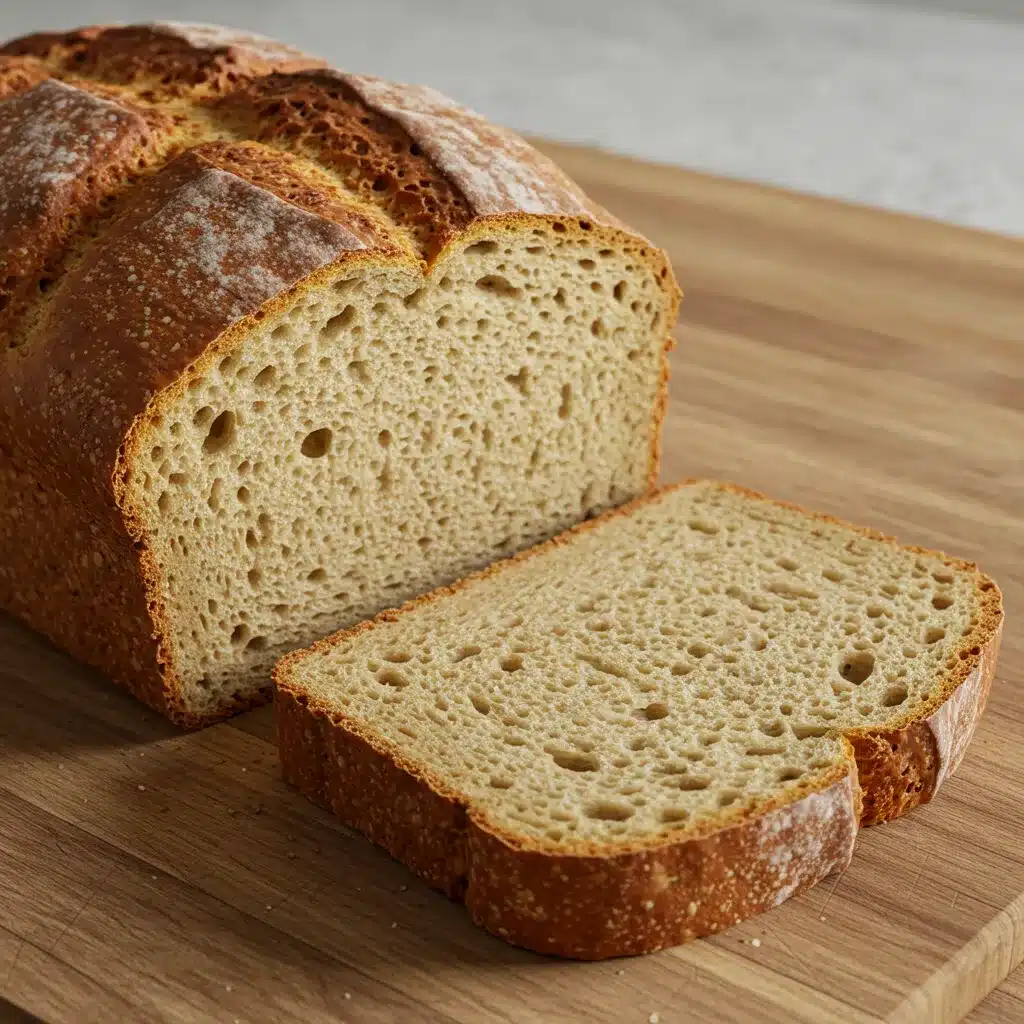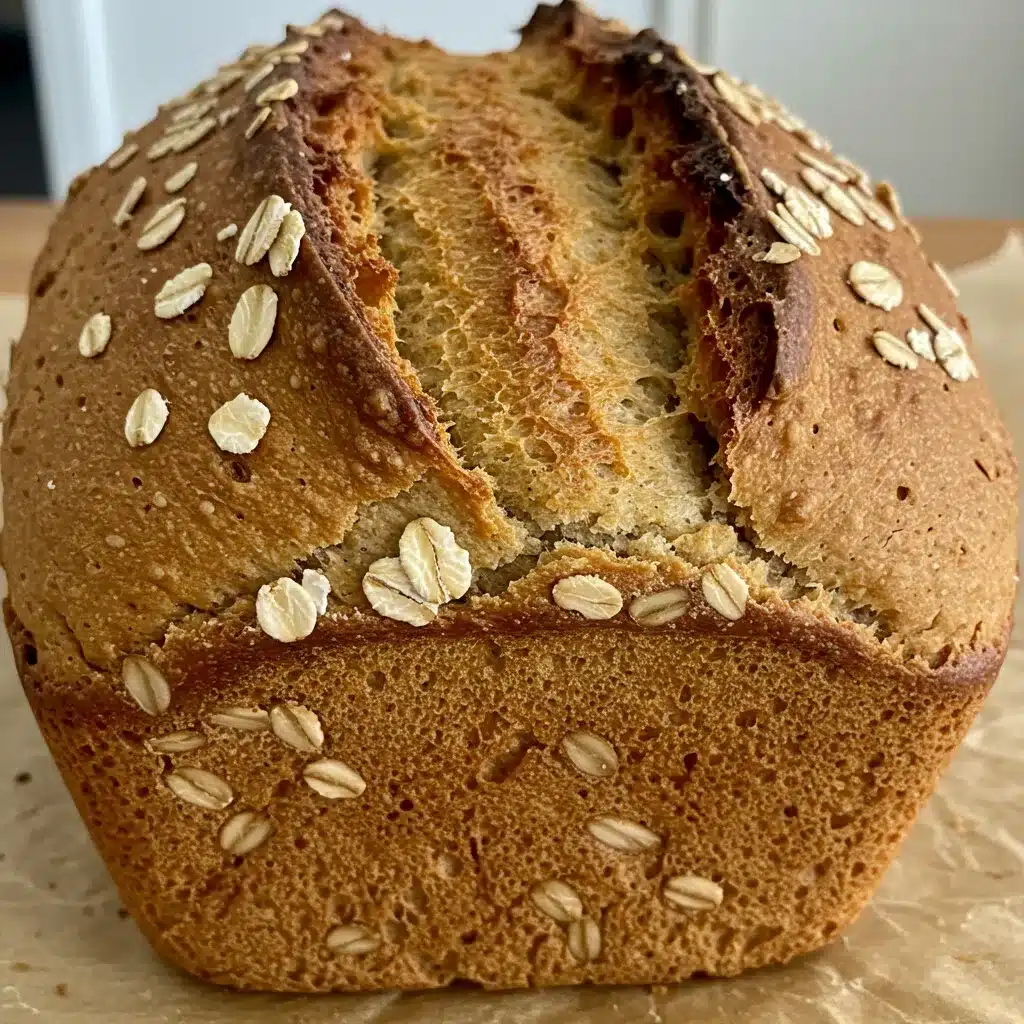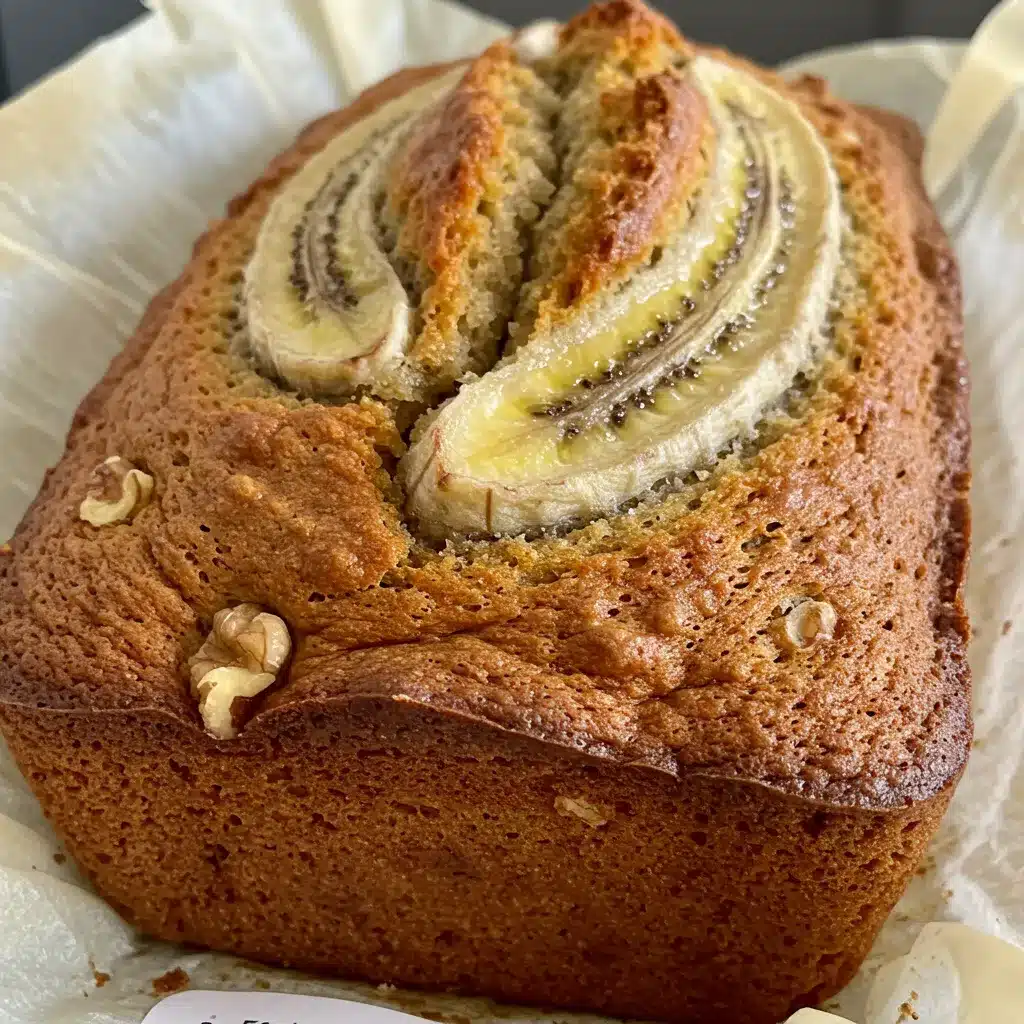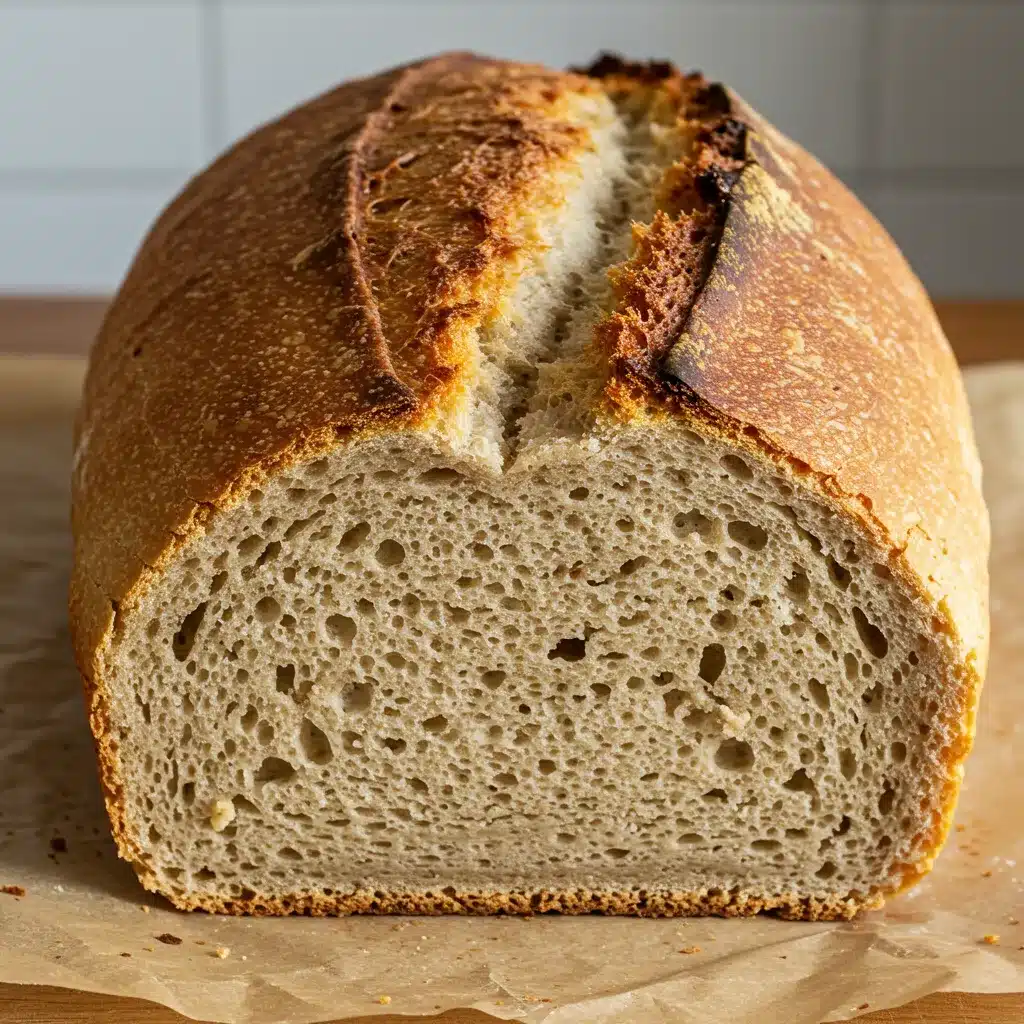Stage 4 GAPS Diet Bread Recipe Without Eggs: A Delicious Alternative
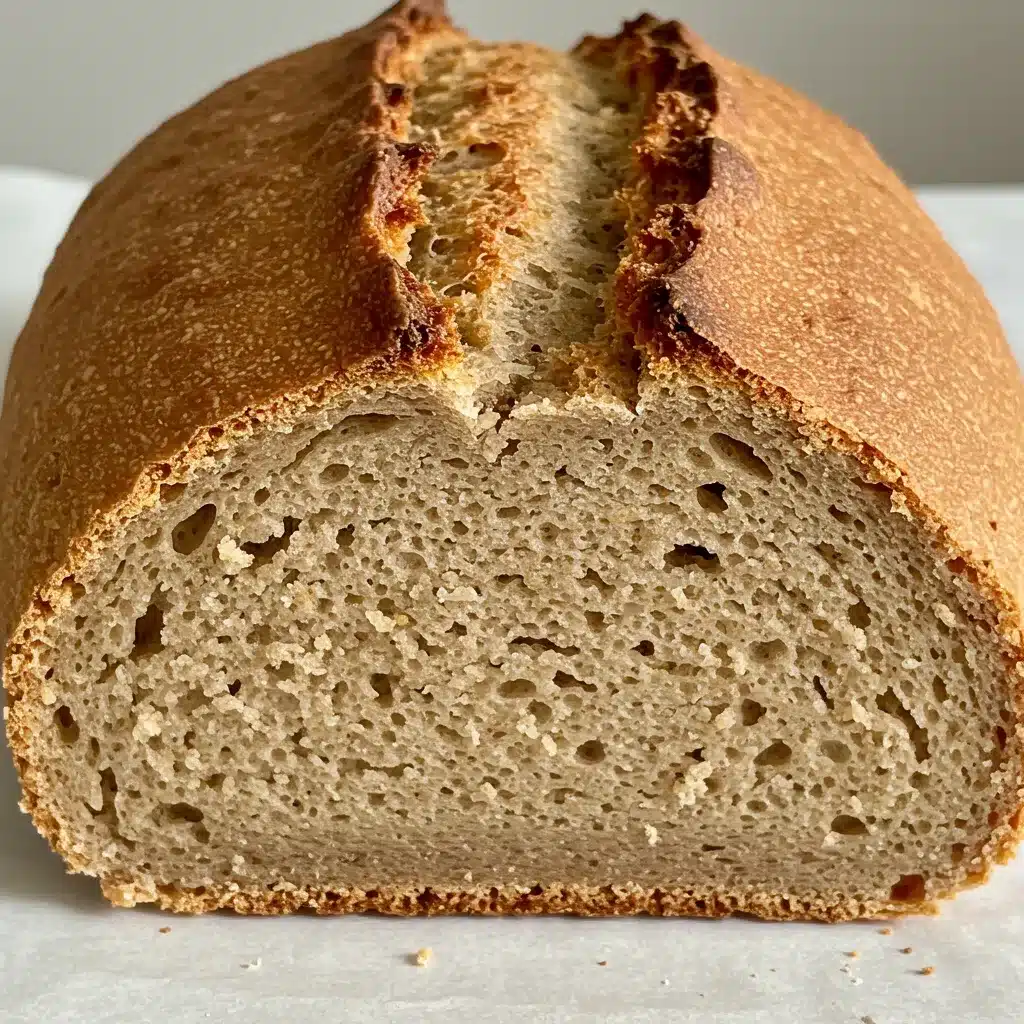
Starting the GAPS diet can make you miss a warm slice of bread. But, I’ve found a tasty stage 4 GAPS diet bread recipe without eggs. It’s easy to make and packed with nutrients, perfect for those on the GAPS diet.
This bread is special because it uses creamy coconut butter, not coconut flour. It’s soft and sturdy, great with soups, spreads, or just on its own. Try baking this homemade bread to nourish your body and soul.
Table of Contents
Understanding the GAPS Diet Framework
The GAPS (Gut and Psychology Syndrome) diet focuses on gut health and body balance. It introduces good foods and removes bad ones. This helps fix the gut lining damaged by unhealthy foods, stress, and toxins.
Core Principles of GAPS Diet
The GAPS diet believes many health issues start in the gut. It offers a diet plan to tackle problems like autism, ADHD, depression, and autoimmune diseases. The main ideas of the GAPS diet are:
- Eliminating grains, refined carbs, and processed foods
- Adding foods rich in nutrients and probiotics
- Using bone broth and fermented foods to heal the gut
- Slowly adding more foods back into the diet
Role of Stage 4 in Gut Healing
Stage 4 of the GAPS diet introduces eggs and dairy carefully, especially for those with allergies. It’s about keeping the gut healing and watching how the body reacts to new foods. This stage helps people figure out what foods they can safely eat long-term.
Benefits of Following GAPS Protocol
People following the gut and psychology syndrome diet and autoimmune protocol diet see many benefits. They experience better digestion, less inflammation, clearer minds, and overall health improvement. By tackling the root cause of their health issues, they often see a big boost in their quality of life.
Essential Ingredients for Your Egg-Free GAPS Bread
Making a tasty and healthy gluten-free bread, grain-free bread, or paleo bread recipe without eggs is a fun challenge. The ingredients are chosen to mix great taste, texture, and health benefits for your gut.
Almond flour is at the core, providing protein. Coconut flour adds moisture and makes the bread soft. Probiotic powder or yogurt are key for gut health and following the GAPS diet.
Flaxseed meal acts like eggs, binding and rising the dough. It also adds omega-3 fatty acids for extra nutrition. Seeds and nuts, like chia seeds and chopped pecans, add crunch and vitamins.
Coconut butter replaces coconut flour for a smooth dough. This makes the bread easy to handle and enjoy.
| Ingredient | Function |
|---|---|
| Almond flour | Protein-rich foundation, nutty flavor |
| Coconut flour | Moisture and fiber |
| Probiotic powder or yogurt | Gut health and GAPS diet support |
| Flaxseed meal | Egg substitute, omega-3 fatty acids |
| Seeds and nuts | Texture, crunch, and nutrients |
| Coconut butter | Smooth, spreadable consistency |
These ingredients blend to make a gluten-free bread, grain-free bread, or paleo bread recipe. It’s both healthy and fits the GAPS diet.
Why Choose an Egg-Free Bread Recipe
Choosing an egg-free bread recipe on the GAPS diet has many benefits. It’s easier on your gut and supports healing. It’s also great for those with food allergies or sensitivities.
Benefits for Gut Health
The GAPS diet aims to heal the gut lining. An egg-free bread is easier to digest and doesn’t trigger inflammation. This helps with gut healing and makes the diet more effective.
Allergy Considerations
Eggs are a common allergen. An egg-free recipe makes bread safe for more people, including those with egg allergies. This makes the bread inclusive and suitable for your dietary needs.
Digestive Advantages
The GAPS diet focuses on easy-to-digest, nutrient-dense bread. Egg-free bread uses ingredients like coconut butter or chia seeds. These are gentler on the stomach than traditional bread, supporting better digestion and the diet’s goals.
Kitchen Equipment and Tools Needed
To bake the perfect GAPS diet-friendly bread, you need some key tools. These will help your egg-free GAPS bread come out just right. Here’s what you’ll need:
- A loaf pan, either 8×4 inches or 9×5 inches in size
- Large and medium-sized mixing bowls
- Measuring cups and spoons
- A spatula or spoon for mixing and stirring
- An optional oven thermometer to monitor the temperature accurately
- A wire rack for cooling the baked bread
Before you start, grease your loaf pan with a thin layer of ghee or coconut oil. This prevents the bread from sticking. These basic tools are key to getting the right texture and rise for your egg-free bread.
| Baking Tool | Purpose |
|---|---|
| Loaf Pan | Shapes the bread and ensures even baking |
| Mixing Bowls | Allows for thorough mixing of ingredients |
| Measuring Cups/Spoons | Provides precise measurements for consistent results |
| Spatula/Spoon | Aids in mixing and transferring the dough |
| Oven Thermometer | Ensures accurate temperature control for baking |
| Wire Rack | Allows for proper cooling and prevents soggy crust |
With these tools, you’re ready to make delicious and healthy GAPS diet-friendly bread without eggs.
Stage 4 GAPS Diet Bread Recipe Without Eggs
Starting the GAPS diet? Discover how to make tasty stage 4 bread without eggs. This recipe meets your dietary needs and pleases your taste. It’s great for breakfast or as a side dish.
Base Ingredients List
- 2 cups almond flour
- 1/2 cup coconut flour
- 1 teaspoon baking soda
- 1/2 teaspoon salt
- 1 cup plain yogurt (or dairy-free alternative)
- 1/3 cup melted ghee (or coconut oil)
- 1 tablespoon apple cider vinegar
Optional Add-ins
- 1/4 cup of your favorite seeds (such as chia, flax, or sunflower)
- 2 tablespoons of fresh herbs (like rosemary or thyme)
Preparation Steps
- Preheat your oven to 350°F (175°C) and grease a loaf pan.
- In a large bowl, whisk together the almond flour, coconut flour, baking soda, and salt until well combined.
- In a separate bowl, mix the yogurt, melted ghee, and apple cider vinegar.
- Gently fold the wet ingredients into the dry ingredients, being careful not to overmix.
- If using any optional add-ins, fold them in at this stage.
- Transfer the batter to the prepared loaf pan and smooth the top.
- Bake for 45-50 minutes, or until a toothpick inserted into the center comes out clean.
- Allow the bread to cool completely before slicing and serving.
Enjoy this stage 4 GAPS diet bread recipe without eggs, perfect for supporting your gut healing journey. Pair it with your favorite toppings or enjoy it as a satisfying snack. Get ready to savor the flavors of this egg-free baking delight!
Mixing and Baking Techniques
When baking your delicious gluten-free GAPS diet bread without eggs, the key is to employ the right mixing and baking techniques for optimal texture and rise. Follow these steps to ensure your GAPS diet cooking techniques yield the perfect loaf:
- Start by thoroughly whisking the dry ingredients, including the almond flour, baking soda, and any other seasonings, to ensure even distribution.
- Gently fold in the wet ingredients, such as the warm milk, molasses, and softened butter, being careful not to overmix. This gentle approach helps maintain the desired light and airy crumb.
- Allow the batter to rest for 10 minutes before pouring it into a greased baking pan. This resting period enables the ingredients to meld together, enhancing the overall flavor and texture of the bread.
- Bake the bread at 350°F (175°C) for 45-50 minutes, or until a toothpick inserted into the center comes out clean. Keep an eye on the bread during the last 10 minutes of baking to prevent over-browning.
- Once baked, let the bread cool in the pan for 10 minutes before transferring it to a wire rack to cool completely. This gentle cooling process helps the bread retain its structure and prevents it from becoming too dense.
By following these gluten-free baking tips and GAPS diet cooking techniques, you’ll be able to create a delicious and nutritious egg-free bread that is perfect for your GAPS diet journey.
“The key to perfect GAPS diet bread is in the mixing and baking technique. By taking the time to carefully combine the ingredients and allowing the batter to rest, you’ll be rewarded with a light, flavorful loaf that’s sure to satisfy.”
Storage and Shelf Life Tips
This preserving gluten-free bread recipe is special. It stays fresh and tasty, even after being refrigerated. This is thanks to the gelatin. It’s perfect for GAPS diet meal prep and planning meals ahead.
Proper Storage Methods
Keep your egg-free GAPS bread fresh by storing it in an airtight container. You can keep it at room temperature for up to 2 days. Or, store it in the fridge for up to 5 days.
If you want to keep it longer, slice it and freeze it. You can freeze it for up to 3 months. Just thaw the slices when you’re ready to eat them, at room temperature or in the toaster.
Freezing Instructions
- Slice the bread into individual portions before freezing for easy thawing and serving.
- Wrap each slice tightly in plastic wrap or foil to prevent freezer burn.
- Place the wrapped slices in a resealable freezer bag or airtight container.
- Freeze for up to 3 months.
- To thaw, simply remove the desired number of slices and let them sit at room temperature until defrosted, or toast them directly from the freezer.
By following these tips, you can enjoy your homemade preserving gluten-free bread for a long time. It’s great for your GAPS diet meal prep.

Nutritional Benefits and Analysis
The egg-free GAPS bread recipe is a nutritious and versatile addition to your diet. It aligns well with the GAPS protocol. Each slice of this nutrient-dense bread has about 140 calories. It has a macronutrient profile that focuses on healthy fats and protein over carbs.
The almond flour in this recipe is a rich source of plant-based protein and healthy monounsaturated fats. These can help support overall wellness and energy levels. The coconut milk adds a creamy texture and more beneficial fats to the mix.
With only 5 grams of carbohydrates per slice, including 2 grams of fiber, this GAPS diet nutrition-friendly bread helps keep carb intake low. The reduced carb content, along with healthy fats and protein, can help you feel full. It also promotes stable blood sugar levels.
“This nutrient-dense bread aligns well with GAPS diet principles, promoting energy and supporting overall wellness.”
The egg-free GAPS bread is a nutritious and versatile option for your GAPS diet journey. Its mix of healthy fats, protein, and minimal carbs makes it great for gut health and overall well-being.
Common Baking Challenges and Solutions
Baking egg-free breads on the GAPS diet can be tricky. But, with the right tips, you can make tasty, healthy bread. Let’s look at some common problems and how to solve them. This will help you get better at gluten-free baking and GAPS diet baking.
Achieving the Proper Texture and Rise
One big challenge is getting the right texture and rise without eggs. Adding a little gelatin can help. It makes the bread more stable and structured. Also, make sure your ingredients are at room temperature before mixing.
Don’t overbeat the batter. It can make the bread dense and tough. If your bread is too dense, try adding a bit more baking soda. This can help it become lighter and airier.
Achieving a Crispy Crust
To get a crispy crust, brush the bread with melted ghee or coconut oil before baking. This will give it a golden-brown look and a crunchy texture. It also adds flavor.
| Common Baking Challenge | Potential Solution |
|---|---|
| Dense, heavy texture | Use gelatin to stabilize the mixture; increase baking soda slightly |
| Lack of rise | Ensure ingredients are at room temperature before mixing; avoid overmixing |
| Soft, doughy crust | Brush the top with melted ghee or coconut oil before baking |
By using these tips, you can make delicious, gluten-free and GAPS-friendly breads. Your whole family will love them.
Serving Suggestions and Pairings
The GAPS diet bread you’ve made is great for any meal. For breakfast, top it with mashed avocado, fresh herbs, and sea salt. The avocado and herbs add a creamy and fragrant touch to the bread’s nutty taste.
For lunch, use this bread as a base for gluten-free sandwiches. Fill it with meats, veggies, and spreads for a tasty meal. It also goes well with soups and stews, adding a comforting touch.
Breakfast Ideas
- Avocado toast with a sprinkle of sea salt and chopped fresh herbs
- Nut butter and GAPS-friendly jam or preserves
- Scrambled eggs and sautéed spinach
- Smoked salmon and cream cheese
Lunch Combinations
- GAPS-approved deli meat, lettuce, tomato, and mustard
- Grilled chicken, roasted vegetables, and hummus
- Tuna salad with celery and onion
- Roasted turkey, avocado, and GAPS-friendly mayo
For a sweet treat, spread nut butter on your bread and add fresh berries or jam. The nutty flavor and natural sweetness will meet your sweet tooth without breaking GAPS diet rules.
Recipe Variations and Modifications
Explore a world of flavors with GAPS diet recipe adaptations and gluten-free bread variations. Add herbs like rosemary or thyme for a unique taste. Or, try cinnamon for a sweet twist.
Boost nutrition by adding chopped spinach, zucchini, or carrots. This makes your loaf rich in veggies.
For crunch and nutrition, mix in nuts and seeds. This adds healthy fats, proteins, and minerals to your bread.
| Variation | Ingredients | Benefits |
|---|---|---|
| Herbed Bread |
| Aromatic, savory flavor profile |
| Cinnamon Swirl Bread |
| Warm, sweet notes with a touch of spice |
| Veggie-Packed Bread |
| Nutrient-dense with added fiber and vitamins |
| Nut and Seed Bread |
| Crunchy texture and healthy fats |
Make your GAPS diet bread recipe your own. These changes add flavor and nutrition. Your homemade loaf will be more nourishing and delicious.
Health Benefits of Egg-Free GAPS Bread
Choosing egg-free GAPS diet bread brings many health perks. It boosts gut health and fits well with the GAPS diet’s anti-inflammatory goals.
This bread is super easy to digest. Without eggs, a common allergen, it’s less likely to upset your stomach. It’s perfect for those on the GAPS diet, helping with healing and nourishment.
The bread also has fewer carbs and more healthy fats. This helps keep blood sugar stable, which is good for your health. Plus, it’s egg-free, making it safe for those with egg allergies or sensitivities.
This bread is not just easy to digest. It’s also packed with protein and nutrients. Ingredients like almond flour, coconut milk, and chia seeds add vitamins, minerals, and healthy fats. These support your body’s healing.
“Incorporating this egg-free GAPS bread into your diet can be a game-changer for your gut health and overall well-being. Its nutrient-dense composition and easy digestibility make it an invaluable addition to the GAPS protocol.”
If you’re on the GAPS diet or just want a gut-friendly, anti-inflammatory bread, try this recipe. It offers many health benefits, helping you nourish your body and reach optimal wellness.
Tips for Perfect Texture and Rise
Getting the right texture and rise in gluten-free baking is key, especially for GAPS diet baking tips. To make your GAPS diet bread light and airy, follow these tips:
- Start with all ingredients at room temperature. This helps them blend seamlessly and promotes even rising.
- Avoid overmixing the batter, as this can lead to a dense, heavy loaf. Gently fold the ingredients together until just combined.
- Let the batter rest for 10 minutes before baking. This allows the flours to fully absorb the liquids, resulting in a more structured rise.
- Use fresh, high-quality baking soda to maximize the bread’s lift and rise.
- Opt for a light-colored baking pan, as dark pans can cause the crust to over-brown and affect the overall texture.
- Resist the urge to open the oven door during baking. Maintaining a consistent temperature is crucial for the perfect rise.
By using these gluten-free baking techniques and GAPS diet baking tips, you’ll make a GAPS diet bread that’s both tasty and has a great texture.
| Ingredient | Quantity | Nutritional Information (per slice) |
|---|---|---|
| Almond Flour | Provides healthy fats, fiber, and plant-based protein | 140 calories, 4g protein, 12g fat (4g saturated), 5g carbs (2g fiber, 3g net carbs) |
| Coconut Milk | Adds additional healthy fats | |
| Chia Seeds | Contribute omega-3s, fiber, and natural binding properties | |
| Flaxseed Meal | Serves as an egg substitute, providing omega-3s and fiber | |
| Seeds and Nuts | Enhance texture, flavor, and nutrient content |
By following these gluten-free baking techniques and GAPS diet baking tips, you can make a GAPS diet bread that’s not only delicious but also packed with nutrients for your gut health.
Conclusion
This stage 4 GAPS diet bread recipe without eggs is tasty and healthy. It’s perfect for those on the GAPS protocol or looking for a gluten-free bread option. It’s great for many meals and diets.
By knowing the GAPS diet, using good ingredients, and following the baking tips, you can make a stage 4 gaps diet bread recipe without eggs. This bread helps your gut health and overall well-being.
The recipe doesn’t have eggs, which is good for those with allergies or intolerances. It still has important nutrients and a nice texture. This stage 4 gaps diet bread recipe without eggs is great for anyone wanting to eat better.
Learning how to make this gluten-free bread will make your body happy and your taste buds too. Remember, improving your gut health is a personal journey. This recipe is a helpful tool on your path to wellness.
FAQ
What are the key ingredients in this stage 4 GAPS diet bread recipe without eggs?
The main ingredients are almond flour, coconut flour, baking soda, and salt. You also need yogurt or a dairy-free alternative, ghee or coconut oil, and apple cider vinegar. You can add seeds or herbs for extra flavor and texture.
How does this egg-free GAPS bread differ from typical cloud bread recipes?
This egg-free GAPS bread stays fresh longer than most cloud breads. It uses gelatin, which keeps it from getting soggy. It stays tasty and has a good texture even after being refrigerated for a while.
What are the health benefits of this egg-free GAPS bread?
This bread is easy to digest and supports gut health. It fits well with the GAPS diet. It’s low in carbs and high in healthy fats, helping keep blood sugar stable. It’s egg-free, making it safe for those with allergies, but still packed with protein and nutrients for healing and wellness.
How should I store this GAPS diet bread and how long will it last?
Slice the bread and freeze it for longer storage. Thaw slices as needed for quick meals. You can also refrigerate it overnight or for a few days. It keeps its texture and flavor well.
What are some common challenges in baking this egg-free GAPS bread and how can I overcome them?
Achieving the right texture and rise can be tricky. Use gelatin to stabilize the mix. Make sure ingredients are room temperature before mixing. Avoid overmixing.
If the bread feels too dense, add a bit more baking soda. For a crispy crust, brush the top with ghee or coconut oil before baking.
How can I customize the flavor of this GAPS diet bread?
Try adding herbs like rosemary or thyme for a unique taste. Cinnamon can make it sweet. For a veggie-packed loaf, mix in chopped spinach, zucchini, or carrots.
Make a nut and seed mix version by adding chopped nuts and seeds to the batter.
Have you tried this recipe?
Cooking made joyful with Perky Recipes

